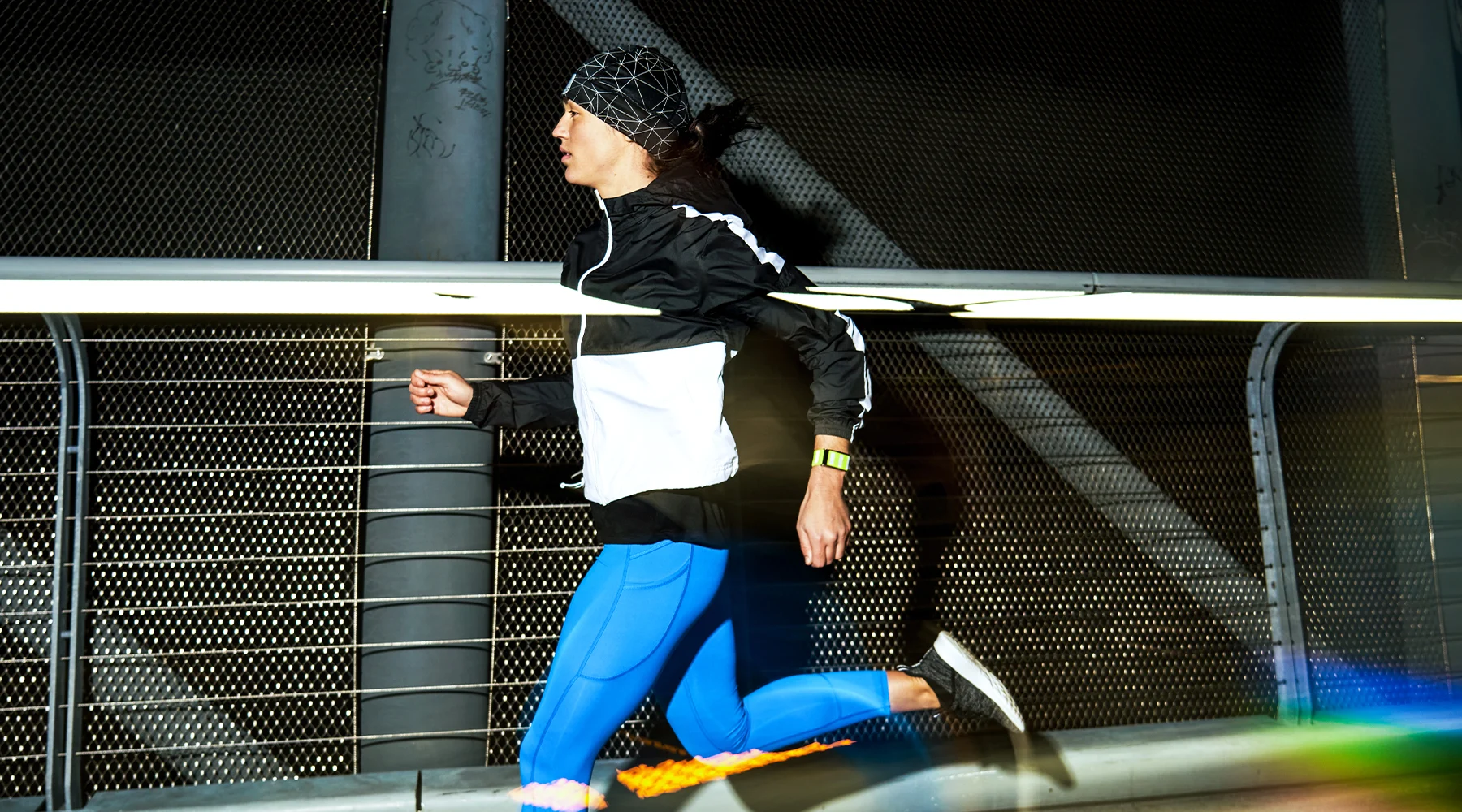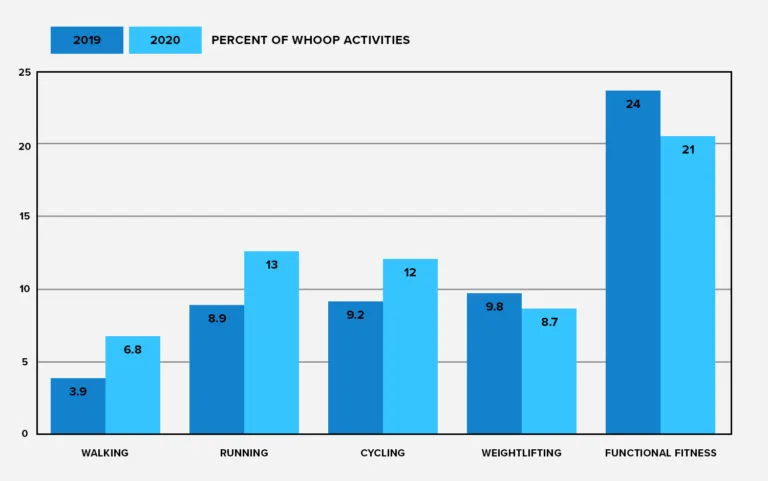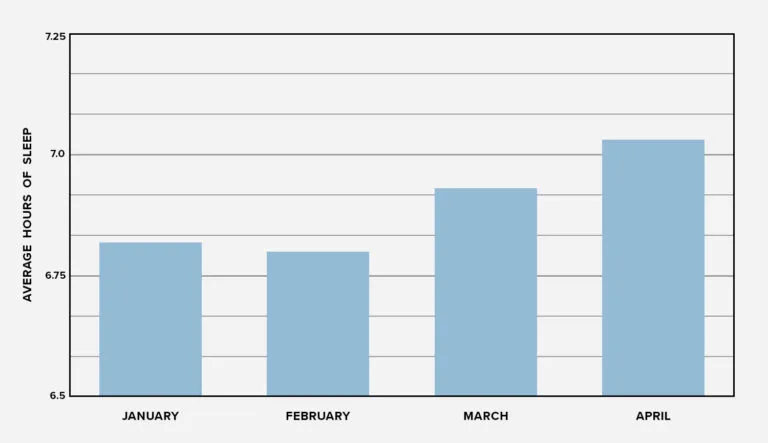Topics
- Article
- Health & Wellness
Health & Fitness Trends in 2020 Seen in WHOOP Data

Notable Averages, Highs and Lows for Strain, Sleep & Recovery
As many of us eagerly look forward to what 2021 may bring, 2020 is a year that will stand out in our memories for a long time to come. While it was a difficult and trying year that impacted everyone in various ways, there are a number of things we can learn from examining the biometric data of our collective population of WHOOP members in 2020. Below we break down some of our most intriguing findings in the context of the three core pillars of WHOOP: Strain, sleep and recovery.
Strain: Activity, Workout & Fitness Trends
Strain Norms
The average day strain for all WHOOP members in 2020 was 10.7 (on a scale of 0-21). This was actually down significantly from 2019, when it was 11.5. Unlike many of the other stats to follow, we actually don’t suspect this is an effect of COVID-19 and people spending much of the year staying home. Instead, it’s more likely a result of the WHOOP member base growing and expanding rapidly beyond athletes to the general population at large. In the US, strain peaked in the months of May and June, with averages of just over 11 per day. People took on the least strain in December (10.3 average), which is something we’ve seen in years past as well.
Strain Changes
However, the most notable activity and fitness trends in 2020 were not related to the amount our members exercised, but rather the type of workouts they did. The chart below shows the percentage of all activities logged on WHOOP represented by walking, running, cycling, weightlifting and functional fitness, in both 2019 and 2020:

So for example, in 2019 running accounted for 8.9% of all activities. But in 2020, that number jumped up to 13%. You can see that individual forms of exercise which require little or no equipment (quarantine-friendly workouts), including walking and cycling as well, increased significantly in 2020. On the other hand, weightlifting and functional fitness, which often take place in gyms, both decreased. Weightlifting in particular saw the biggest drop off in April and May (only 2.7% of WHOOP activities) during the height of lockdown.
Sleep: Changes in Behavior
More Sleep
On average, WHOOP members slept 2,054 more minutes in 2020 than they did in 2019 (actually it was 2,472, but we accounted for 2020 being a leap year and having an extra day). It was a little more than 34 hours in total, roughly 6 minutes per night: 6:58 vs. 6:52. Whether it was no longer getting up early to commute to work, fewer opportunities to go out late at night, or possibly just a lack of other activity choices, WHOOP members began sleeping more when the pandemic took hold (mid March). Below we display the average hours of sleep per night in the US in January, February, March and April of 2020:

Best Sleep
The night we slept the most in 2020 was the evening of December 25, an average of 7.44 hours. The second-best night of sleep for WHOOP members (7.38) was when daylight savings went into effect, giving us an extra hour early in the morning on November 1 (more on both of these in the recovery section to follow).
Worst Sleep
We regularly find that New Year’s Eve is the night people sleep the least, and generally by a wide margin. But in 2020, there was another that rivaled it--November 3, election night. The average WHOOP member woke up on November 4 having slept about half an hour less than they normally do.
Recovery: Highs and Lows
Good Recoveries
April was the month in 2020 when US members had the highest average daily recovery, 61%. That makes sense considering the increase in sleep from March into April. We saw the highest average heart rate variability (HRV, a valuable performance indicator and key component of WHOOP recovery) in the summertime, just over 65 ms in June, July and August. This aligns nicely with the increase in strain noted above in May and June--people working out more in late spring led to better overall fitness in the summer.
Bad Recoveries
HRV hit its low December (US average of 59.4 ms), which coincides with it being the month when people were least active. The single worst average recovery day in 2020 was 50% on January 1, no surprise. The next lowest was 52% on July 5, predictable as well. Also 52% was November 1, which is quite surprising considering it was one of the nights WHOOP members got the most sleep. Apparently the aftereffects of Halloween were too much to be fixed by some additional time sleeping. Christmas day marked one of the poorest average recoveries as well, at 53%. Factors like social time with family the evening before, or getting up extra early with the kids in the morning, likely contributed (and explain why people slept so much that night afterwards). Outdoing all of these though, was January 1, 2021:

In a year when being socially distant and cooped up at home may have caused us to take advantage of the holidays more than we normally do, the last night of 2020 was clearly a time we chose to really celebrate.
Predictions for 2021: What Should We Expect in the Year Ahead?
Will we begin to see a return to normalcy in 2021? What will fitness and wellness look like in a (hopefully) post-COVID world? Are there trends from 2020 that are here to stay? Here are some insights from former WHOOP Co-Founder and former Chief Technology Officer John Capodilupo: “One of the most significant behavior changes we noticed from physical distancing due to COVID-19 was a prioritization of sleep. As the population has become more and more conscious of the benefits of sleep, I believe people in 2021 will take a more proactive role in knowing how behaviors and products can impact sleep. In particular, things like sleep consistency, which is more easily in a person's control than increasing REM, etc. I also think that wearables, and WHOOP specifically, have shown how important understanding your physiological baseline is. I predict this is the start of a major trend where we will finally accumulate and analyze lots of granular data at the individual level. Over the course of the next few years, better preventive medicine, empowered by individuals themselves, will come to light.” Learn More: 17 Things to Use as Alternative Weights at Home Alcohol’s Effect on the Body: HRV, Sleep & Data Insights Exercise and Fitness Trends During Quarantine from COVID-19 Positive Changes in WHOOP Data During COVID-19 Social Distancing